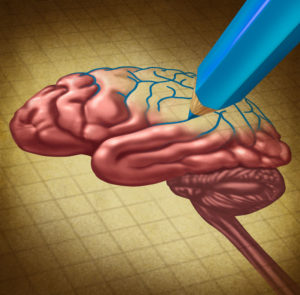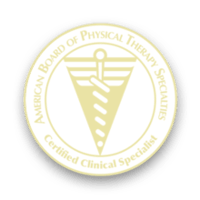Recovery after a stroke can come with a slew of emotions including shock, fear, depression, and hope. Staying positive and maintaining hope is absolutely essential to the recovery process. One thing that can cause frustration and maybe even lead to a sense of hopelessness is a period of plateau. Understanding what a plateau is, how it happens and how to cope with it could be the single most important thing to understand in order to stay on track, not lose hope and ultimately achieve your goals. Why? Maintaining hope is the one quality that breeds perseverance, determination and the strength necessary for recovery.
What is a plateau?
“Plateau: a state of little or no change after a period of progress”
Ugh. No change, No progress. A horrible thought or feeling for anyone who is working hard to get their life back. Hence, making it the most important word every stroke survivor needs to understand. So, what is a plateau? The answer can be found in Jill’s story.
Jill’s Story
Jill suffered a stroke 3 months ago. Initially, she had severe weakness on the left side of her body. As Jill shares her story with me, she recalls regaining movement in her arm and her leg almost immediately. For the past 3 months, Jill recalls, seeing progress almost every day. Then things started to change.
Fast forward to today. Jill comes to therapy feeling down and discouraged. The complete opposite from Jill’s typical positive attitude. She tells me that she feels like she is working harder and she is not seeing any improvement. From her perspective, it seems like overnight her progress just stopped, or significantly slowed down. She doesn’t understand why she isn’t seeing the same improvements that she has been accustomed to since she suffered her stroke. She is frustrated and starting to lose hope that she will reach her goals.
Can you relate to Jill’s story?
Maybe you don’t feel it, but you hear it from your therapist. “you have hit a plateau.” You have entered into a new phase. Gone are the moments filled with new accomplishments and in its place, are seemingly insurmountable challenges. If you have experienced this, you are not alone. You have entered into a normal part of the recovery process, known as a plateau. It is important to understand that this is a normal. A plateau WILL occur at some point. So, is it possible to stay positive and avoid feeling discouraged during these times when it seems like progress has halted to a snails pace?
The good news is YES! How is this possible? Well, before we get to that, lets talk about how the brain heals after a stroke and ……um, hurricanes. HURRICANES? ![]() No, that is NOT a typo. The aftermath of a hurricane (hey, I’m a Floridian) has a lot in common with how the brain heals and hopefully will help explain the “aftermath” of a stroke.
No, that is NOT a typo. The aftermath of a hurricane (hey, I’m a Floridian) has a lot in common with how the brain heals and hopefully will help explain the “aftermath” of a stroke.
What does a hurricane have in common with a stroke?
As a Floridian, the aftermath of a stroke, makes me think of how a city recovers from a hurricane. For all the “non-Floridians” let me explain the aftermath of a hurricane. Immediately following a hurricane, the area closest to the eye of the hurricane suffers the most severe damage. The amount of structural damage depends on several factors including the storm size (diameter), wind speed, and how long the storm takes to move out of the area.
The first step after a storm is to restore power and start removing debris. It is only after this clean-up crew completes their work, that you can finally see how much actual damage the storm caused. The longer a city goes without power, the more catastrophic the damage will be.
The next step is the rebuilding phase. This is the most time consuming and costly part of a hurricane. This requires contractors, building material, and lots of skilled workers to get the city functioning again.
So, what does all this have to do with a stroke? Similar to a hurricane, a stroke causes a lot of destruction in a short period of time. Initially, the goal is to restore blood flow (get the storm to leave the area). Once blood flow is restored, recovery occurs in 3 phases.
Phase 1: The Acute Phase (After the storm before power is restored)
The acute phase is the first phase of recovery and lasts up to 1 week after a stroke. This first phase involves cell death, and brain swelling.
Phase 2: The Subacute Phase (the clean up)
The next phase is the subacute phase and lasts up to 3 months. I call this the “clean-up” phase. During this phase brain swelling and inflammation gradually subside. “Debris” is removed and nerves that were not completely destroyed by the stroke, start to function again. This phase is when the greatest functional recovery occurs.
Phase 3: The Chronic Phase (the rebuilding)
The final phase is the chronic phase and begins 3 months after a stroke. This is when the brain begins to rewire. This rewiring phase is the time when the hard work begins. This rewiring phase now depends primarily on the principle of neuroplasticity.
Hopefully, you can stay with me and follow my analogy to a hurricane. The clean up after a hurricane starts immediately after the storm passes. Similar to a hurricane, after a stroke, this clean up phase is a natural process initiated by the brain (with the help of modern medicine). Nerves in the brain that were NOT completely destroyed by the stroke, begin to function again. Hence, patient’s will see functional recovery with little to no effort.
After a hurricane, once the debris is removed, you start rebuilding damaged structures so the city can function properly again. Now the resident is responsible to hire contractors, fight with insurance companies, and put in the manual labor to get their home functioning again. This is no longer a passive process, but requires action and work on the part of the resident. After a stroke, this “rebuilding phase” is the time where the most work is required. At this point, most of the nerves that were going to regain function on their own have regained function. Now progress is based on the theory of neuroplasticity (rewiring the brain).
Why should you expect a plateau 3 months after a stroke?
As I stated earlier, Phase 3 (the rebuilding phase) usually occurs about 3 months after a stroke. So the natural passive process has stopped and now the rewiring begins. If you read my blog on neuroplasticity, you can see that rewiring the brain is not an easy process. Not easy BUT NOT IMPOSSIBLE.
How to avoid the “3 month plateau”
Now that you understand the phases of stroke recovery, preventing this “3 month plateau” is possible. How? I thought you would never ask. 🙂
Mentally prepare for Phase
Anticipate that progress will slow down and try not to get discouraged. Keep reminding yourself that rewiring the brain is a slow process and requires TONS of practice. Nothing bad or unusually has happened. You have just entered a new phase.
Change your mindset
Up until this point, the goal was to get rid of as much debris as possible and quickly as possible. Now the focus needs to change. Entering phase 3 must come with a new attitude. Progress now will depend 100% on hard work, perseverance, and patience.
Cut yourself a break
Don’t be too hard on yourself. Pay attention to the little things that are getting better and try NOT to focus on everything you CAN’T do. Progress may slowed down but it DID NOT stop!
It is important to note this is just a small part of the stroke recovery process. You can learn much more about what to expect after a stroke in the following link.









“Can I just say what a relief to uncover an individual who actually understands what they are talking about online. You definitely know how to bring a problem to light and make it important. More and more people ought to look at this and understand this side of the story. I was surprised you are not more popular because you definitely have the gift.”
נערות ליווי
gder4563